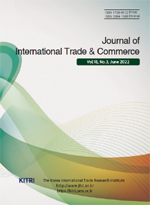학술논문
How Does Dynamic Capability Adjust Chinese Firms’ Capabilities to Adapt to Environment Changes?
이용수 16
- 영문명
- How Does Dynamic Capability Adjust Chinese Firms’ Capabilities to Adapt to Environment Changes?
- 발행기관
- 한국무역연구원
- 저자명
- Chunxia Zhang Ho-Yeol Bang
- 간행물 정보
- 『무역연구』제19권 제1호, 103~127쪽, 전체 25쪽
- 주제분류
- 경제경영 > 무역학
- 파일형태
- 발행일자
- 2023.02.28

국문 초록
영문 초록
Purpose – In a constantly turbulent industry environment, companies seeking to survive or even maintain a competitive edge should be able to adapt their capabilities to respond to opportunities and challenges wherever and whenever they arise. This study proposes a research model based on previous research and attempts to illustrate the relationship between the frequency of utilization of the three components of dynamic capabilities and innovation capability and how environmental turbulence (i.e., the market, technology, and competitors) moderates the relationship between dynamic capabilities and innovation capability. Design/Methodology/Approach – The study sample comprises 256 Chinese companies, with longitudinal data spanning three years. Partial Least Squares-structural equation models (PLS-SEM) have been conducted to empirical data analysis. Findings – The findings suggest that the frequent utilization of sensing, seizing, and reconfiguring capabilities in a highly turbulent environment may have different degrees of impact on innovation capabilities. To cope with environmental turbulence, dynamic capabilities (i.e., sensing, seizing, and reconfiguring) should be carefully managed to enable capability alignment and ultimately enhance competitive advantage. Dynamic capabilities are valuable to organizations and even contribute to their ability to be innovative. Research Implications – Advancing from existing literature, this research contributes to extend knowledge about the dynamic capabilities and innovation capability, makes it necessary for organizations to use dynamic capabilities to effectively modify their approach to innovation in stable or turbulent environments.
목차
I. Introduction
II. Literature Review and Hypothesis Development
III. Conceptualization and Hypotheses
IV. Research Methods
V. Results
VI. Conclusion
References
해당간행물 수록 논문
참고문헌
최근 이용한 논문
교보eBook 첫 방문을 환영 합니다!

신규가입 혜택 지급이 완료 되었습니다.
바로 사용 가능한 교보e캐시 1,000원 (유효기간 7일)
지금 바로 교보eBook의 다양한 콘텐츠를 이용해 보세요!


